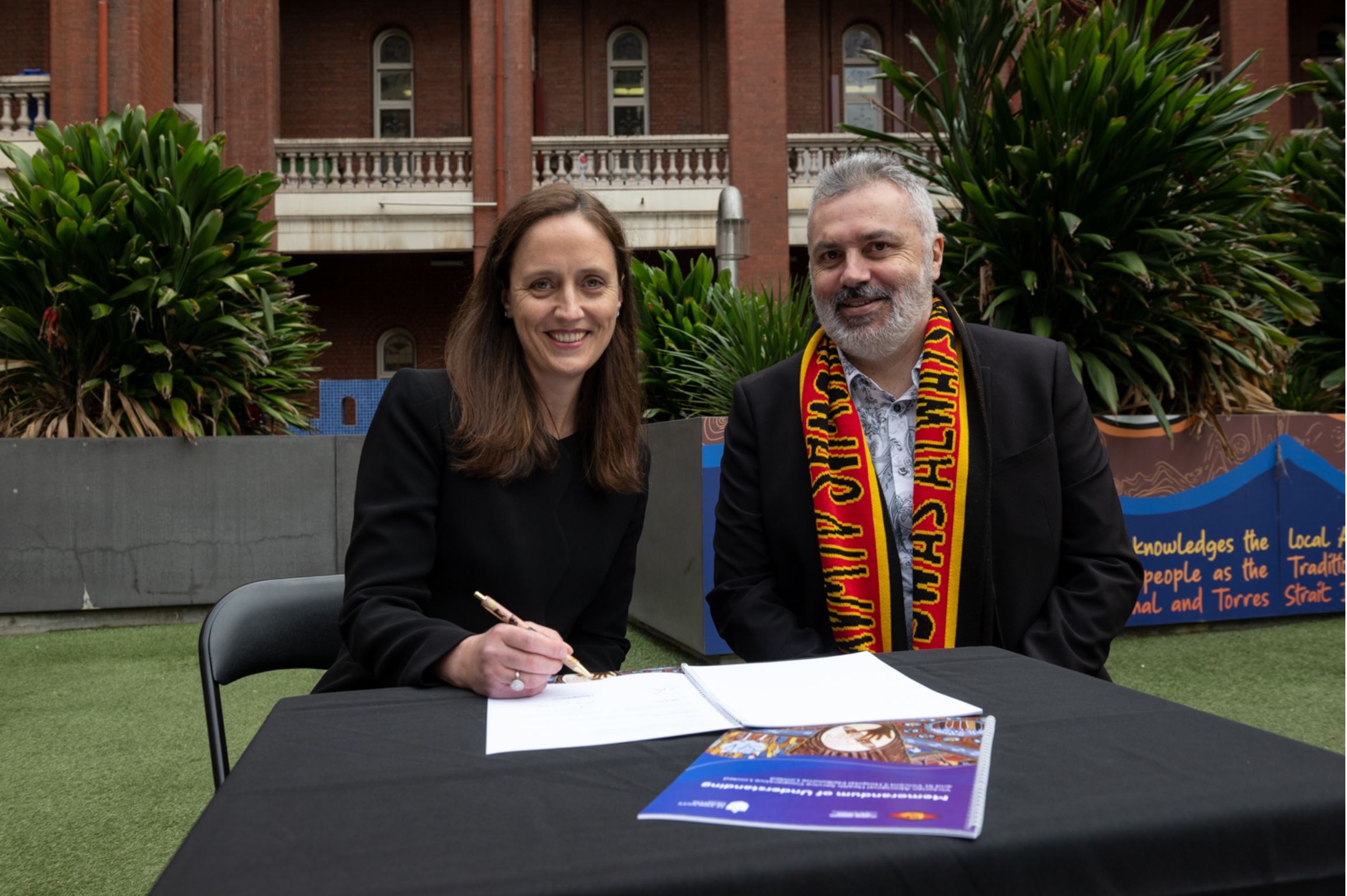Signing of Memorandum of Understanding with St Vincent’s Hospital Melbourne and Victorian Aboriginal Health Service

Image L-R: St Vincent's Hospital Melbourne Chief Executive, Nicole Tweddle and Victorian Aboriginal Health Service Chief Executive Officer, Michael Graham
The Memorandum of Understanding (MoU) between St Vincent’s Hospital Melbourne and Victorian Aboriginal Health Service (VAHS) was re-signed during National Reconciliation Week, which provides a time for us all to gather and learn about our shared histories, cultures and achievements, and to explore how each of us can contribute to achieving reconciliation in Australia.
The Memorandum was formed in 2011, however, the connection between both services dates back much further than this. St Vincent’s has been working alongside VAHS for decades to improve the experience of Aboriginal and Torres Strait Islander people accessing both health services.
Outlining our shared commitment to improving the experiences of First Nations, the Memorandum signifies the strengthening of this long-standing partnership.
This relationship has seen the establishment of various initiatives to ensure culturally safe care for First Nations patients in the community. The Mental Health Adult Inpatient Services Koori Unit was established in 1994 and is located in the St Vincent’s Mental Health Adult Inpatient Service. The integrated Koori Unit supports a state-wide, five bed inpatient service that liaises with VAHS and their family counselling and mental health teams.
Strengthening partnerships to address complex health challenges
The St Vincent’s Wilam Ngarrang Aboriginal Hospital Liaison Service exemplifies our commitment to providing safe environments for First Nations people. This team works with health professionals, including VAHS, to provide culturally appropriate care for First Nations patients and families. The team improves access to care, experiences of care and health outcomes. They offer advocacy and cultural support to First Nations patients and their families as they navigate the health and social services they require.
St Vincent’s led a project to ensure the accurate identification of First Nations patients who access our services. Accurate identification is imperative to providing culturally safe and clinically appropriate care. A staff working group was established and they amended our policy and produced educational resources to support clerical staff. The education resources were piloted, and an audit showed this question was now being asked 100 per cent of the time.
These initiatives actively address the health disparity between First Nations people and non-Aboriginal people. They demonstrate how our commitment to Reconciliation and to closing the gap in health outcomes has evolved into meaningful action, expanded services, new procedures and enhanced cultural safety.